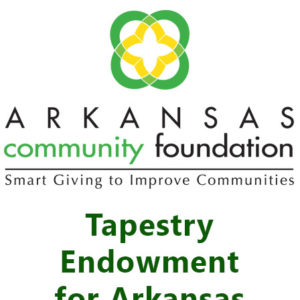calsfoundation@cals.org
Jerome Kalman Sherman (1925–)
Jerome (Jerry) Kalman Sherman, considered the “Father of Sperm Banking,” was a professor at the University of Arkansas for Medical Sciences (UAMS) from 1958 until 1992, when he became professor emeritus, remaining active until 1994. During his decades as a research scientist and teacher of anatomy, he significantly shaped the field of cryobiology—the study of biological materials at low temperatures—and the emergence of human sperm banks as part of reproductive medicine. Through his involvement in multiple charitable organizations in the Little Rock (Pulaski County) area, he has also improved the lives of many Arkansans.
Jerry Sherman was born in Brooklyn, New York, on August 14, 1925, the only child of Murray and Beatrice Sherman. An eager student, he graduated from high school early and entered Brooklyn College at the age of sixteen. He interrupted his education for military service during World War II, leaving college to join the U.S. Navy at age seventeen. Entering as a seaman in 1943, Sherman earned a commission at Notre Dame, and then served until 1946 in the Pacific Theater as an anti-submarine officer. He learned of the Japanese surrender on his twentieth birthday, while on a ship preparing to invade mainland Japan. After the surrender, he participated in the occupation of Japan, where he was the first naval line officer to enter Nagasaki after the atomic bomb attack. He left the navy with the rank of lieutenant commander.
After his discharge, Sherman returned to college at Brown University, earning his AB (bachelor’s degree) in biology in 1947. His interest in science took him first to Western Reserve University in Ohio (now Case Western Reserve), where he earned an MS in biology in 1949, and then to doctoral studies in zoology at the University of Iowa (UI).
At UI, Sherman earned international recognition while he was still a graduate student. A side project, arising out of his job at the medical school freeze-drying specimens for the Department of Urology, led to the first human conceptions using frozen and then thawed semen. In 1949, a group of British scientists reported its success in impregnating chickens using previously frozen semen treated with glycerol as a protectant. Sherman read the article and began his own experiments. When Sherman was painting a urology professor’s house to earn extra money, he told Dr. Raymond Bunge about his experiments. Bunge, affiliated with the newly established university infertility clinic, eagerly promoted the project, arranging for Sherman to be hired by the urology department as a research associate to work with human-semen preservation, and also for human trials of Sherman’s technique using clinic patients. Sherman, Bunge, and Dr. William Keettel, the obstetrician at the clinic, hoped that the ability to store semen by freezing would allow doctors to create a more concentrated specimen from a sub-fertile man, by combining several ejaculates, and also reduce the awkwardness of timing semen collection with the intended mother’s ovulatory cycle when performing artificial insemination.
When three patients were impregnated using previously frozen semen in 1953, Bunge and Sherman wrote up their results in a brief paper accepted by the international journal Nature, a prestigious venue for one of Sherman’s first peer-reviewed publications. Medical and public opinion about artificial insemination as a means of family formation, however, was divided, and news of the pregnancy brought controversy and criticism to the researchers. Sherman, however, remained undeterred.
Sherman dropped his original dissertation project in electron microscopy and made his experiments in freezing and freeze-drying human semen the subject of his doctoral thesis. When he received his degree in 1954, he moved to the Biological Research Institute in Madison, Wisconsin, to work with animal semen, and then accepted a position in the Department of Anatomy at what is now UAMS in 1958.
Continuing his research for the next four decades, Sherman published prolifically on cryopreservation and presented on the current state of sperm banks at conferences throughout the world. He became a charter member of the Society of Cryobiology in 1964 and served on the editorial board of its journal, the Journal of Cryobiology. He also helped found the American Association of Tissue Banks, the self-regulating body of sperm banks, helping to write the regulations for the processing and management of frozen-sperm inventories. In 1991, he drafted the first standards for the cryobanking of human embryos for the association. He also consulted with multiple individual animal and human sperm banks throughout the 1970s until 2002. In 1994, his decades of service to sperm banking were recognized with a distinguished service award from the association.
The hopes that freezing could increase the success of artificial insemination using semen from men with low sperm counts proved to be unfounded. Fertility doctors throughout the 1970s continued to prefer using fresh semen from anonymous donors with high sperm counts to maximize chances of pregnancy. That preference, however, changed when the medical community learned that HIV, the virus that causes AIDS, could be transmitted through human semen, and that a semen donor could be infected with HIV for several months before any test could detect HIV in his blood or semen. Sherman pointed out that by storing a frozen semen sample for months and then retesting the donor, doctors could be sure that a specimen would not transmit HIV to the intended mother. Sherman used his expertise in sperm cryopreservation to help the medical community make the transition to frozen sperm. He served as an advisor to the Food and Drug Administration (FDA) on AIDS and cryobanking from 1988 to 1992.
As a faculty member at UAMS, Sherman taught microscopic anatomy to medical students. His students, who sometimes called him “Spermin’ Sherman” behind his back, appreciated his willingness, in the words of one former student, to “do whatever he could to see that we passed our studies.” He promoted minority recruitment and retention, seeking to create a medical profession that reflected the racial population of Arkansas. His efforts resulted in the establishment of the Office of Minority Affairs within the School of Medical Sciences. His efforts in teaching and institutional support were recognized when he became the only faculty member to receive both the Distinguished Faculty Award (1992) and the Faculty Volunteer Service Award (1991).
In the Little Rock community, Sherman was active in his Jewish temple, the Lions Club, and the YMCA. For decades, he volunteered with the Boy Scouts, receiving multiple awards from the Boy Scouts for his service, including the Silver Beaver Award in 1998. Through the Boy Scouts, he worked to interest youth in medical careers, originating and directing a week-long career camp held at UAMS in 1982 for eighty-five minority, rural, financially disadvantaged, and special-needs youth. This camp became a model for later programs administered by the Office of Minority Affairs to introduce students of all ages to medical careers. He fostered youth interest in science by helping to organize local, regional, and state science fairs and serving as judge at such fairs for many years.
Sherman worked to help his fellow veterans by serving as a founding member of Arkansas Post No. 436 of Jewish War Veterans, through which he helped organize programs to aid disabled and handicapped veterans of all faiths. Sherman volunteered with the Department of Veterans Affairs and initiated the Birthday Buddy Visitation Program at the veterans’ hospital in Little Rock, receiving the Presidential Gold Volunteer Award in 2005. For twenty-five years, he also personally visited hospitalized cancer patients from abroad receiving treatment at the Myeloma Institute for Research and Therapy in Little Rock, helping patients and their families feel more comfortable during their stay by speaking to them in their native language (using his knowledge of French, German, and Spanish), taking them shopping, and bringing special foods to their rooms. He also worked to sponsor the Amelia Ives Day Care Center for underprivileged children in Little Rock, chairing its advisory board in 1970, and continuing to serve on the board for twenty-six years.
In recognition of these multiple achievements and contributions, in 1995 Sherman was inducted into the Senior Arkansans Hall of Fame, and, in 2006, he received a Distinguished Alumni Award from UI.
While he was in graduate school at UI, Sherman met and married a fellow graduate student, Hildegard Schroeder. They raised three children in Little Rock, where they continue to reside.
For additional information:
Swanson, Kara W. Banking on the Body: The Market in Blood, Milk, and Sperm in Modern America. Cambridge, MA: Harvard University Press, 2014.
———. “The Birth of the Sperm Bank.” The Annals of Iowa 71 (Summer 2012): 241–276. Online at http://ir.uiowa.edu/annals-of-iowa/vol71/iss3/3/ (accessed September 9, 2021).
Maravetz, Steve, “Baby-Making Breakthrough.” Iowa Alumni Quarterly (Winter 1998).
Kara W. Swanson
Northeastern University School of Law
 Divergent Prosperity and the Arc of Reform, 1968–2022
Divergent Prosperity and the Arc of Reform, 1968–2022 Health and Medicine
Health and Medicine Science and Technology
Science and Technology ACF Logo
ACF Logo 




Comments
No comments on this entry yet.